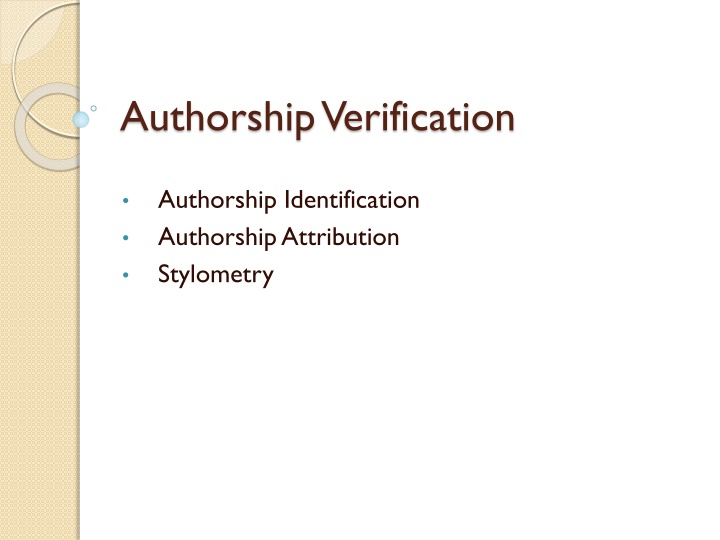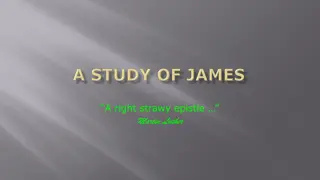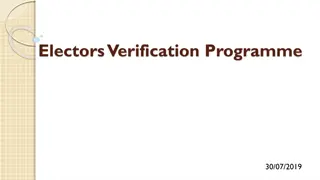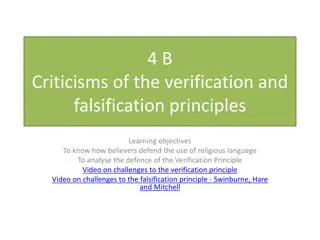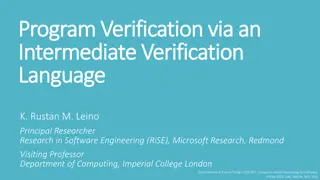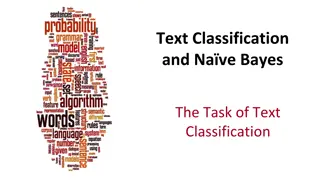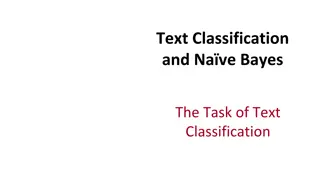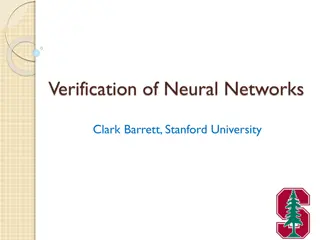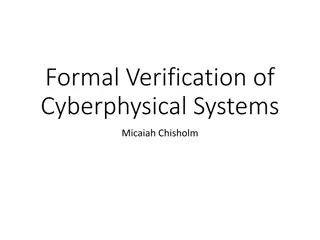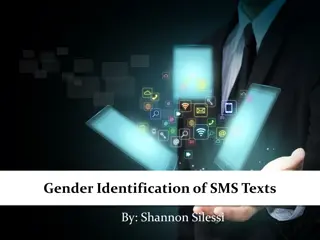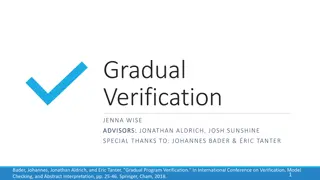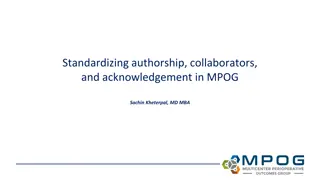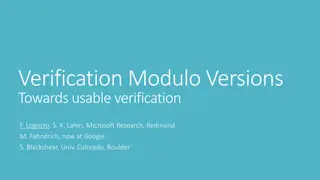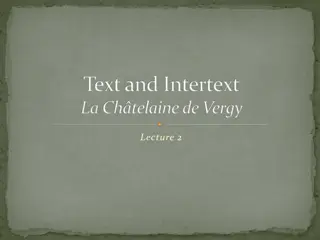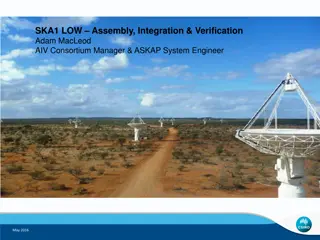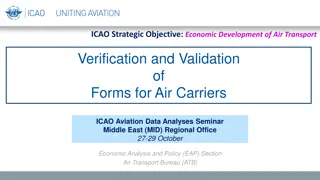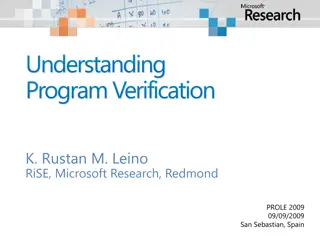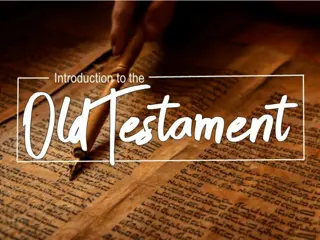Authorship Verification and Identification through Stylometry Analysis
Utilizing methods like word frequency clustering and machine learning classifiers, this project aims to verify authorship and determine the writers of various texts by renowned authors such as Charles Dickens, George Eliot, and William Makepeace Thackeray. By analyzing writing samples and employing tools like Python, nltk, and Weka, the project endeavors to establish authorship authenticity through a rigorous process of data preprocessing and testing.
Download Presentation

Please find below an Image/Link to download the presentation.
The content on the website is provided AS IS for your information and personal use only. It may not be sold, licensed, or shared on other websites without obtaining consent from the author.If you encounter any issues during the download, it is possible that the publisher has removed the file from their server.
You are allowed to download the files provided on this website for personal or commercial use, subject to the condition that they are used lawfully. All files are the property of their respective owners.
The content on the website is provided AS IS for your information and personal use only. It may not be sold, licensed, or shared on other websites without obtaining consent from the author.
E N D
Presentation Transcript
Authorship Verification Authorship Identification Authorship Attribution Stylometry
Author Identification Presented with writing sample (txt, articles, email, blogs, ) Determine who wrote them Examples: Who wrote the Federalist Papers Who wrote Edward III
Data Project Gutenberg http://www.gutenberg.org/
Goals Given works by an author will I be able to verify that the specific document(s) is written by that author or not.
Methods Authors: Charles Dickens George Eliot William Makepeace Thackeray -At least 10 books per authors All from same time period. Why?
Methods - For Authorship Verification Focused on Binary Classification Word Frequency Clustering K-means
Methods Tools Tools Python nltk Weka 3.6
Methods Tools Preprocessing of data Remove common words using with stopList Stemming reduce derived words to base or root Cornell University
Classifier & Testing Implemented training and testing set ~70% for training ~30% for testing Cross Validation Naives Bayes Each Test contain ~ 3000 attributes
ClassiferAnalysis Confusion Matrix TP Rate FP Rate
Classifier -Testing Data Set Comparison between pairs of authors Charles Dickens & George Eliot Charles Dickens & William Makepeace Thackeray George Eliot & Charles Dickens
Classifer Testing After Preprocess Applied TF*IDF for baseline Normalize Document Length Longer Document may contain higher frequency of same word
Classifer Performed Task Cross Validation N=10 Classifer: Na ve Bayes 3000 attributes Train the Dataset and perform on Test Data Retest Using Attribute Selection in Weka Test using top 500 attributes Train the Dataset and perform on Test Data
Results TPR = TP/(TP + FN) Is the fraction of positive example predicted correctly by the model FPR = FP/(TN + FP) The fraction of negative example predicted as positive class
Results Time taken to build model: 0.27 seconds === Stratified cross-validation === === Summary === Correctly Classified Instances 12 70.5882 % Incorrectly Classified Instances 5 29.4118 % Kappa statistic Mean absolute error 0.2941 Root mean squared error 0.5423 Relative absolute error 60 % Root relative squared error 109.0883 % Total Number of Instances 17 === Detailed Accuracy By Class === TP Rate FP Rate Precision Recall F-Measure ROC Area Class 0.9 0.571 0.692 0.9 0.783 0.664 CD 0.429 0.1 0.75 0.429 0.545 0.664 GE Weighted Avg. 0.706 0.377 0.716 0.706 0.685 0.664 === Confusion Matrix === a b <-- classified as 9 1 | a = CD 4 3 | b = GE 0.3511
Results Time taken to build model: 0.8 seconds === Stratified cross-validation === === Summary === Correctly Classified Instances 14 82.3529 % Incorrectly Classified Instances 3 17.6471 % Kappa statistic 0.6107 Mean absolute error 0.1765 Root mean squared error 0.4201 Relative absolute error 36 % Root relative squared error 84.4994 % Total Number of Instances 17 === Detailed Accuracy By Class === TP Rate FP Rate Precision Recall F-Measure ROC Area Class 1 0.429 0.769 1 0.87 0.786 CD 0.571 0 1 0.571 0.727 0.786 GE Weighted Avg. 0.824 0.252 0.864 0.824 0.811 0.786 === Confusion Matrix === a b <-- classified as 10 0 | a = CD 3 4 | b = GE
Results Training & Testing === Re-evaluation on test set === === Summary === Correctly Classified Instances 6 85.7143 % Incorrectly Classified Instances 1 14.2857 % Kappa statistic 0.6957 Mean absolute error 0.1429 Root mean squared error 0.378 Total Number of Instances 7 === Detailed Accuracy By Class === TP Rate FP Rate Precision Recall F-Measure ROC Area Class 1 0.333 0.8 1 0.889 0.833 CD 0.667 0 1 0.667 0.8 0.833 GE Weighted Avg. 0.857 0.19 0.886 0.857 0.851 0.833 === Confusion Matrix === a b <-- classified as 4 0 | a = CD 1 2 | b = GE
Results - Naives Bayes 1.2 1 0.8 TPR 0.6 FPR 0.4 0.2 0 Dickens Eliot Dickens Thackeray Eliot Thackeray
Clustering K-means Test on author pairs Selected < 15 attributes K = 2 (2 authors) From the attributes I chose 2
Clustering K-means Cluster# Attribute Full Data 0 1 (19) (13) (6) ============================================ abroad 0.1032 0.0889 0.1343 absurd 0.0749 0.067 0.0919 accord 0.1207 0.0992 0.1671 confes 0.1166 0.092 0.17 confus 0.1705 0.2134 0.0776 embrac 0.0829 0.0777 0.0942 england 0.1239 0.0958 0.1846 enorm 0.0778 0.0611 0.114 report 0.0839 0.0744 0.1044 reput 0.0832 0.073 0.1054 restor 0.0912 0.0947 0.0834 sal 0.0907 0.0809 0.112 school 0.1074 0.0877 0.15 seal 0.0756 0.066 0.0964 worn 0.085 0.0853 0.0841
Clustering K-means kMeans ====== Number of iterations: 6 Within cluster sum of squared errors: 10.743242464527551 === Model and evaluation on training set === Clustered Instances 0 13 ( 68%) 1 6 ( 32%) Class attribute: @@class@@ Classes to Clusters: 0 1 <-- assigned to cluster 10 0 | CD 3 6 | WT Cluster 0 <-- CD Cluster 1 <--WT Incorrectly clustered instances : 3.0 15.7895 %
Conclusion Word Frequency can be use in authorship verification. Using select attributes with high frequency may be use for clustering but does present high intra and inter class similarity (quality clusters)
References http://www.cs.cornell.edu/courses/cs6740/2010sp/guides/lec03.pdf http://nzcsrsc08.canterbury.ac.nz/site/proceedings/Individual_Paper s/pg049_Similarity_Measures_for_Text_Document_Clustering.pdf http://aclweb.org/anthology-new/Y/Y06/Y06-1066.pdf http://team-project.tugraz.at/2011/09/26/authorship-attribution- presentation/ http://nzcsrsc08.canterbury.ac.nz/site/proceedings/Individual_Paper s/pg049_Similarity_Measures_for_Text_Document_Clustering.pdf
